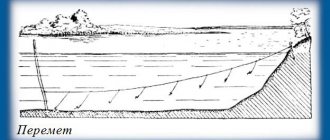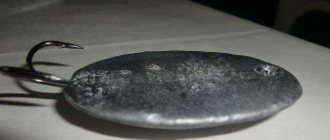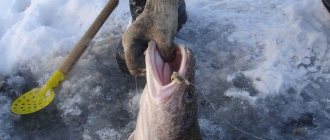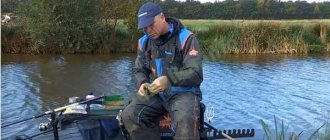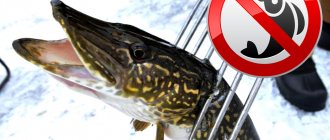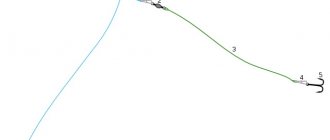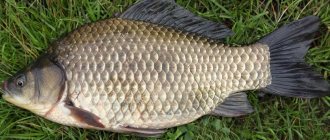Content
- Catching burbot in the fall with a catch
- Snack for burbot: what it consists of, how to make it yourself
- Bait for throwing
- How to catch burbot with a hook
- Features of catching burbot on a donk in September, October and November
- Expert commentary
- Video: Catching burbot in autumn
- DIY burbot bait
It's getting cold outside, it's approaching winter... It's time to sharpen your jigs, you ask? No, it's time to go after one of the most mysterious fish of this time of year.
Catching burbot in the fall with a catch
Autumn fishing for burbot is considered one of the most productive. The fact is that the activity of this fish increases precisely with the onset of autumn, when the water becomes colder every day. You can go after it with either a spinning rod or a feeder, but the most effective tackle is rightfully considered a throwaway. A few of these rigs placed along the shore near the burbot's favorite spots will significantly increase your chances of bringing home the desired catch.
Today we will look at the question: “how to catch burbot in the fall on a donk,” based on “advice from the Internet” and the opinions of experienced fishermen.
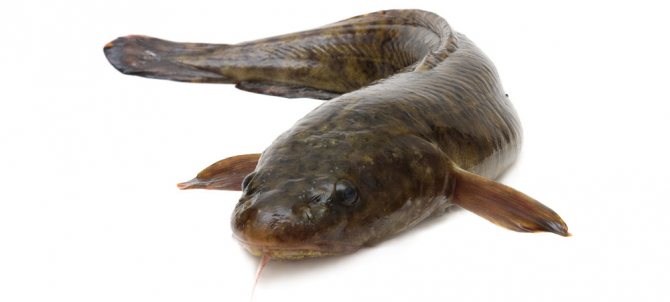
Snack for burbot: what it consists of, how to make it yourself
One of the first questions that an angler has is what is a hook? Literally speaking, this is a simple tackle designed for catching fish from the bottom.
The process of fishing with a zakidushka is a little similar to catching burbot with a feeder, but there are some differences in design. This gear looks like this (let's look at the minimum configuration):
- Fishing line;
- Leash;
- Sinker;
- Hook;
- Reel (rod and reel).
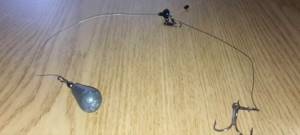
This is a minimum set of components, however, some fishermen prefer to mount several leashes on a fishing line, use all kinds of bite alarms, and take a rod and reel instead of a regular stick.
Rod. You can take either a carp fishing rod or a spinning rod. The main thing is that this is a working test for the sinker you choose. There are no special parameters regarding the length, it all depends on whether it is convenient for you or not.
Coil. The ideal solution would be a 3500/4000 spinning reel.
Fishing line. The diameter does not have to be large. If you are aiming to catch a standard burbot for your pond, then 0.3-0.4 mm will do. As a leash, it is advisable to use a piece of fishing line 0.05 mm thinner than the main one. Since burbot is guided by its sense of smell when hunting, the color of the fishing line is, by and large, not important.
Hooks. For catching burbot, hooks in the range from No. 8 to No. 14 are mainly used. Double or single - it's all up to you. Some argue that when using a double, burbot does not swallow the bait all the way to the stomach. As a result, the hook can be removed without injuring the fish. Others, on the contrary, are against this, since if the burbot does swallow its double, then pulling it out means 100% death of the fish.
Sinker. Its weight depends on the presence and strength of the current in the body of water you choose. If the water is standing or the current is minimal, then a load with a weight of 20 to 40 grams is suitable. If the current is strong, then the load should be heavier, about 80-100 grams.
How to check donks in frozen holes
There is another way to check donks that are thoroughly frozen in the ice. Another one is drilled almost right next to the frozen hole, and the fishing line is taken out of the new hole using an L-shaped wire hook or, in its absence, a handy device made from two rods connected at an angle and the largest fishing hook available. If the depth at the fishing spot is sufficient, the length of the tackle allows you to pull a burbot or a hook with a eaten bait onto the ice. But if the place is shallow and the ice is thick, then you have to dump the supply of fishing line from the reel and pull it through the first, frozen hole. The fishing line in the corresponding area must be lubricated with Vaseline in advance, then it will not freeze to the ice and will slide freely through it. If after several checks there is no catch, then the line is untied from the reel and pulled straight through into the second hole, then the bottom is reeled in again and placed in a new place.
Rice. 5. Checking burbot donks using a handy L-shaped device
In those places where I have caught burbot in winter, frosty winters have been very rare in the last two decades, and there is no need to resort to such tricks, it is enough to better insulate the hole. Some fishermen advise using disk-shaped hatches made of hard foam plastic, the diameter of which is equal to the hole. The method is reliable, but quite labor-intensive. In such cases, I use soft packaging foam, ground into granules. The hole, covered with a layer of foam granules, can withstand frost of several degrees for two days and can be easily cleaned with a simple scoop.
Ways to catch burbot in winter
Above we looked at fishing with donkeys, but this is not the only way to catch winter burbot. How else can you catch burbot in winter:
- Fishing for burbot in winter;
- Features of fishing for burbot on the Oka River;
- They also hunt with ratlins and blens;
- Fishing with “poke” is interesting.
Catching burbot on a pole
The so-called “poke” is an even more simplified version of the winter bottom: the line and sinker are replaced by a pole stuck into the bottom vertically or (if there is a current) at a slight angle. At the lower end of the pole, a deep notch is made with a hatchet, and a loop of a leash, the same as on a winter donka, is wrapped around it. And otherwise, fishing with “pokes” is no different from fishing with donks.
This way it’s convenient to fish in shallow forest rivers, where you don’t have to go far to get material for “pokes.” The advantages of this primitive gear are the following: there is practically no risk of snagging; the hole can be easily cleared with an ice pick, without fear of cutting off the fishing line; there is no need to additionally mark the tackle, the upper end of the pole is visible even after a fair amount of snowfall (the latter is relevant for deserted places, but in the upper reaches of forest streams loitering people are not often found).
Often burbot gear placed near the house is checked once a day - in the evening, after work. And in order not to waste time fishing for live bait, 2-3 “kerchiefs” with a small mesh are lowered under the ice nearby - the perches and roach caught in them are immediately cut for bait.
Bait for throwing
This is the second, no less important question that will arise in your mind while preparing to catch burbot on a donk. There are a great many options, let's look at the most popular ones.
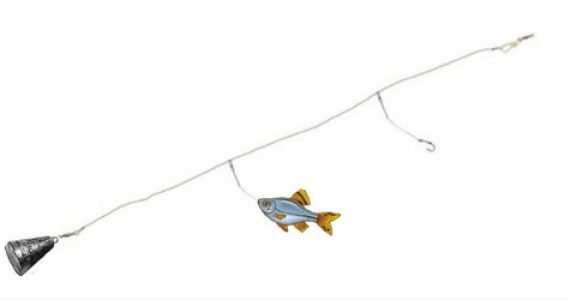
Live bait. This is any small fish (roach, gudgeon, etc.) Popular bait options: behind the lip (upper) or behind the dorsal fin.
The bait bait attracts burbot not only with its smell (the fish is wounded), but also with its movement.
A piece of fish meat. As we have already said, burbot follows its scent. Yes, a wounded fish smells attractive, but a piece of meat is much more attractive. However, do not forget that live bait, even if wounded, can attract burbot for more than a day, while a piece of meat can attract no more than one night.
Frog. This bait is interesting because it divided the burbot camp in two. Some say it’s a completely useless activity, while others say, on the contrary, that burbots are simply crazy about frogs. The golden mean - it all depends on the body of water. In some cases this fish feeds on frogs, in others it does not. The frog is simply attached - either by both lips, or by the back under the spine.
Worms. One of the most popular baits for burbot. When hooking, don’t forget - burbot has a large mouth, so you need to use the largest possible worms, or make a “sandwich”.
